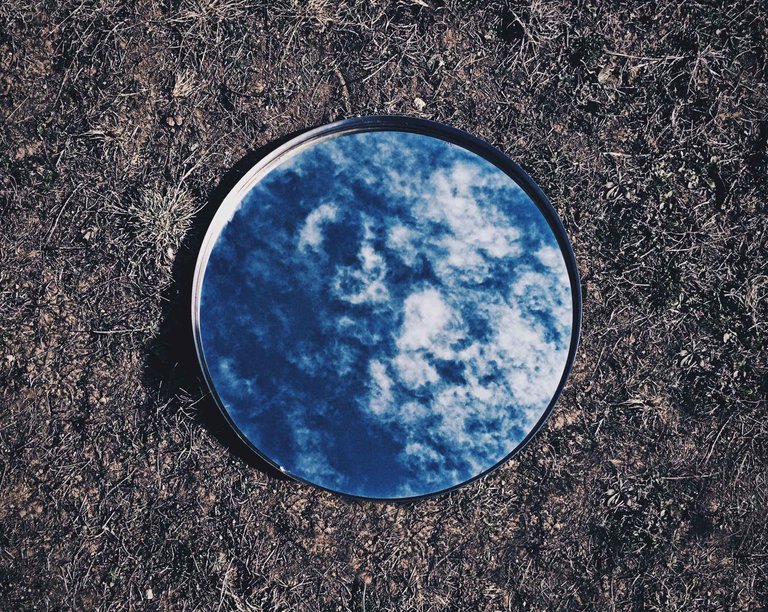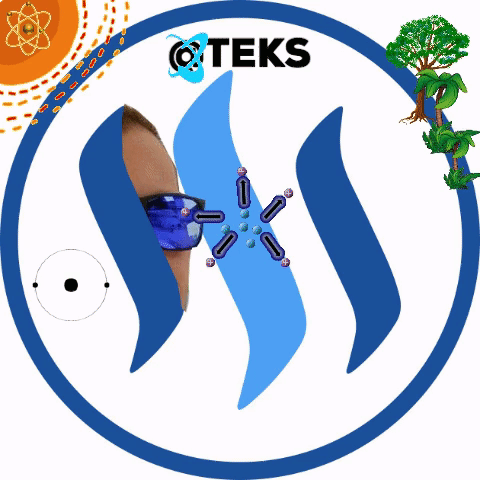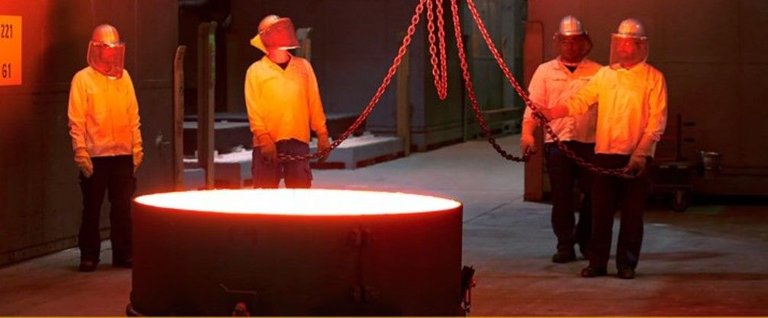Nobody can be totally sure when homo sapiens realized that his reflection appeared on the surface of a stream when trying to drink. But it's very possible that this happened from remote times.

1 - Reflection of clouds in a mirror at grass level. - Credit: PEXELS CC0
It's impossible to predict how many thousands of years ago man understood that the image that returned the surface of the water was himself. But what we do know is that the first mirrors, made of polished obsidian, date back almost ten thousand years.
Archaeological remains have been found in Cappadocia (Turkey), from 8000 BC. In the pre-scientific era, many physical phenomena were considered quasi-magical. It had to be a great event for the ancient civilizations to be able to see themselves reflected. And just as it happens in many other fields, the human being began to improve his manufacturing technique giving way to the use of new materials, discovering one of the properties of light.
The ancient Babylonians used copper for the manufacture of mirrors in about 4000 BC, also the ancient Egyptians, who also tested the reflection properties of light on gold. The mastery of the technique of the ancient Egyptians in the manipulation of gold is well known.
It's believed that the ancient civilizations of Central and South America used mirrors of polished stone about 2000 BC. For their part, Asian cultures made the first bronze mirrors. Also around 2000 BC.
Already in our era, Pliny the Elder spoke of glass mirrors in his famous encyclopedia Natural History. But it wasn't until more than two hundred years ago that a manufacturing technique very similar to that of today was generalized.
In nineteenth-century Germany, more specifically in 1835, a German chemist named Justus von Liebig developed a process in which he applied a thin layer of silver on a transparent glass panel. A revolutionary technique that was quickly adapted and improved. From that moment began its use in a generalized manner.
Of course the evolution of the technique in the manufacture of mirrors didn't stop there. The constant research into the use of new materials with great capacity for reflection of light, has led us to be able to make mirrors that would make blush the ancient Egyptian goldsmiths.
2 - Photograph of the molding of mirrors at high temperature. - Credit: ESO
After this brief historical introduction, we come to the present. This week the ESO has published that the first six hexagonal mirrors of the Extremely Large Telescope (ELT), have been made successfully.
The German company pioneer in optics, SCHOTT, has just removed from the furnace the first segments of what will be the largest telescope in the world, it will be inaugurated in 2024. It’s possible that the name of this company isn’t well known. But if we observe who their founders were, we realize their true importance worldwide. Otto Schott (chemist, specialized in glass), Ernst Abbe (physicist) and Carl Zeiss (entrepreneur), were the ones who laid the foundations of modern Optics. The excellence in the manufacture of lenses for telescopes, microscopes and binoculars made it possible for the name Carl Zeiss to reach our days as the most recognized brand in the manufacture of lenses.
There is still much work ahead to complete the 796 mirrors that make up the ELT. Its primary mirror will measure 39 meters in diameter. The hexagonal panels will be 1.4 meters wide and five centimeters thick. And a final precision of 15 nanometers is expected. To realize the enormous precision, we will say as a reference that a human hair has between 10 thousand to 80 thousand nanometers . The total number of hexagonal segments that SCHOTT will have to mold and subsequently polish will be more than 900. Allowing thus to keep at least 133 as reserve mirrors.
The set of hexagonal segments will work as a single mirror, increasing tens of millions of times the capacity of the human eye. What will turn the ELT into the most powerful optical infrared telescope ever made.
The evolution in the techniques of manufacturing and the physics of materials in this field has allowed us to observe astronomical events so far away that some of them occurred thousands of years ago.
Possibly these technologies will allow us to better understand the secrets that space still reserves for us. Like, for example, the filament seen for the first time this year near the supermassive black hole (Sgr A) that occupies the center of the Milky Way.
References
1 - CC0
https://www.pexels.com/photo/mirror-sky-6756/
Mirrors history
https://www.livescience.com/34466-who-invented-mirror.html
2 - eso1801 — Organisation Release
https://www.eso.org/public/unitedkingdom/news/eso1801/?lang

Gift-thanks to @markperandin
Let's take care of the pale blue dot
Enjoy your day. Enjoy your life.

Gift-thanks to @stellabelle

You got a 1.22% upvote from @buildawhale courtesy of @teks!
To support our daily curation initiative, please vote on my owner, @themarkymark, as a Steem Witness
You got a 50.00% upvote from @votebuster courtesy of @teks!
@echowhale team swimming by with your upvote
This post has received a 14.02 % upvote from @aksdwi thanks to: @teks.